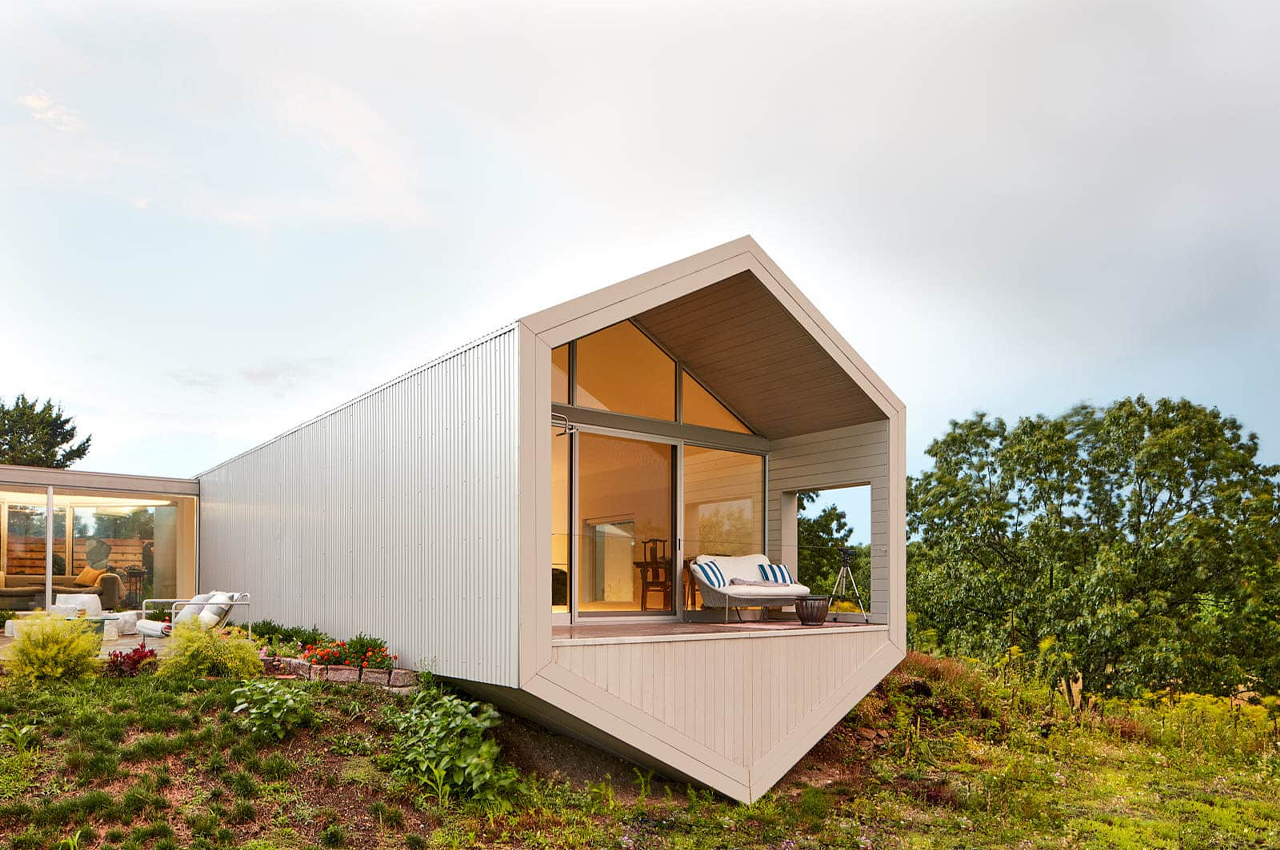
Adding extensions to your home is always a delicate job. Since it’s an extension, it should only complement the rest of your home like a pair of shoes that tie your whole outfit together. Finding balance in geometric, angular framing and exterior metal ribbing, architecture firm Reddymade collaborated with contemporary artist Ai Weiwei to build an artfully understated hexagonal extension on a Salt Point home in upstate New York.
The six-sided extension connects to and extrudes from an enclosed, glass corridor, perching above a green, hilly lawn to overlook the home’s rural landscape. The project’s metal ribbing and optic white exterior offer contemporary flairs to the extension’s farmhouse style layout and rustic setting. Setting the tone for the interior’s airy, white, open spaces, the extension’s bright exterior feels right at home. Inside the home’s extension, Reddymade and Ai Weiwei made room for two bedrooms and living space.
Adorning the walls with a curated collection of framed artworks, Ai Weiwei and Reddymade hit a collaborative sweet spot in their shared love for poetry and visual art. The extension’s gleaming inside walls provide a white canvas for furniture and a collection of artworks to take center stage. Similarly, the spotless white metal exterior merges seamlessly with the glass facades and white framing of the pre-existing home, bringing attention to and brightening the property’s rolling green hills.
“The extension was designed to be strikingly simple and minimal, which is reflected not only in its graphic language but also in its materiality. The metal rib exterior allows for a crisp edge and ensures project longevity. Through its materiality, it also has a relationship with the previously completed Artfarm on the property,” describes Reddymade founder, Suchi Reddy.
Designers: Ai Weiwei & Reddymade

Perched atop a rolling hill in Upstate New York, this minimalist home extension adds a rustic twist to a midcentury modern home.
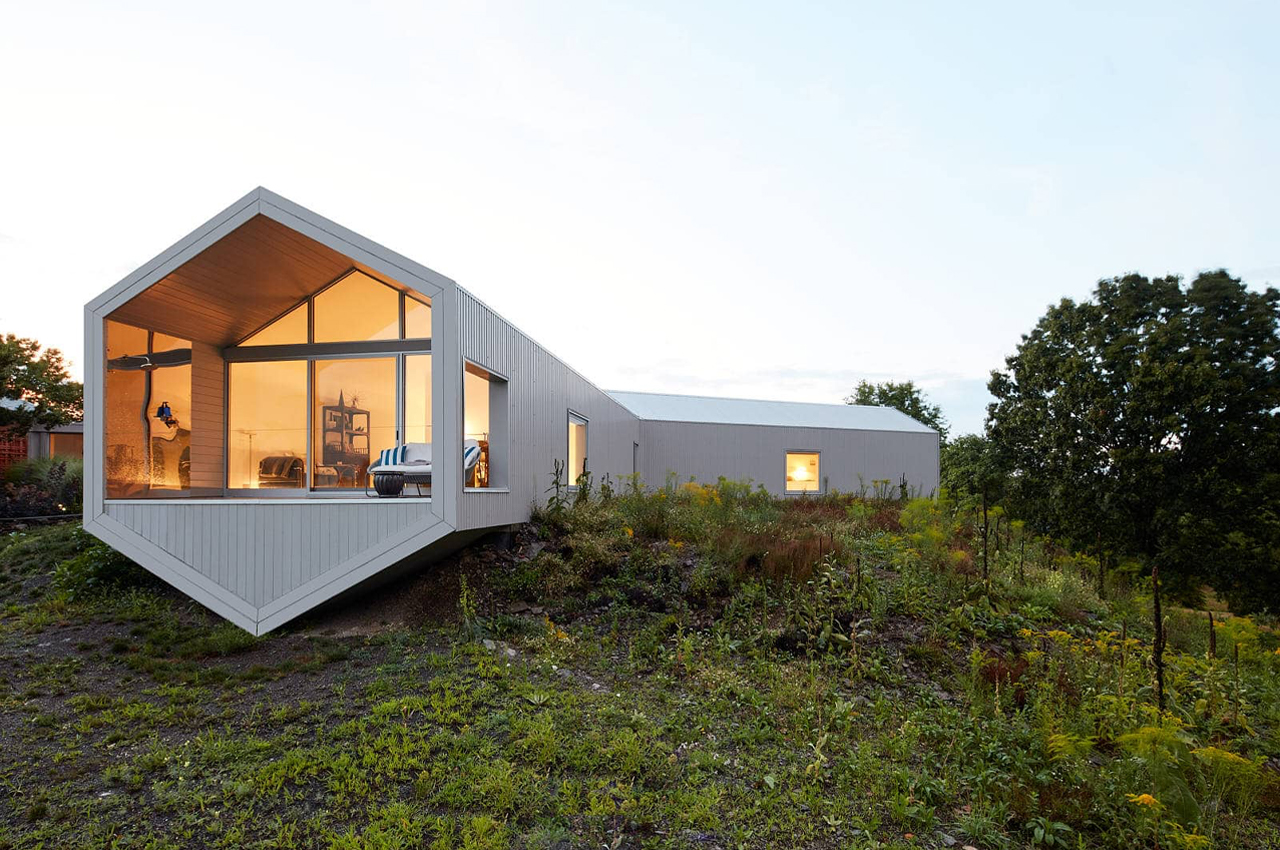
The hexagonal add-on extrudes from a glass corridor, attaching the extension to the pre-existing home.
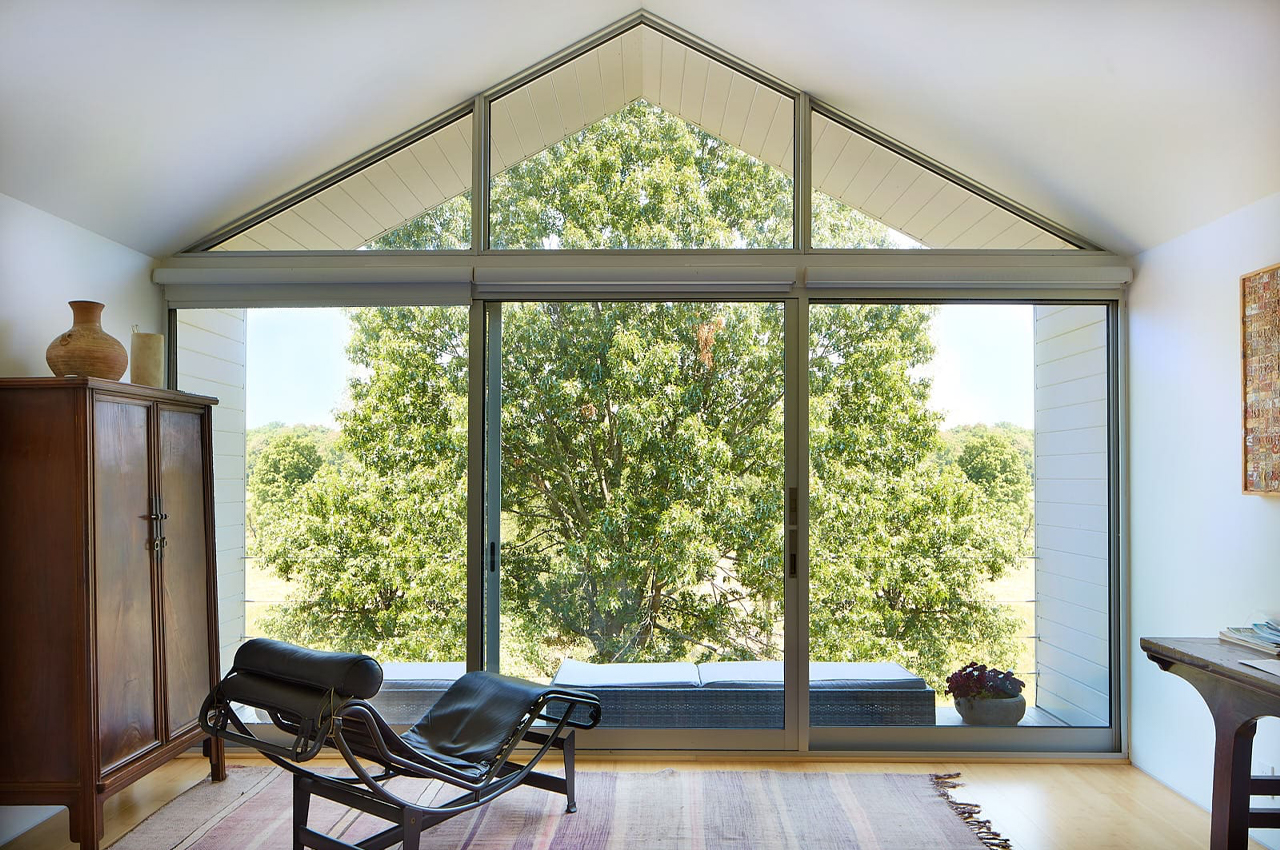
20th-century Italian interior design elements and glazed glass facades are brightened with optic white walls.
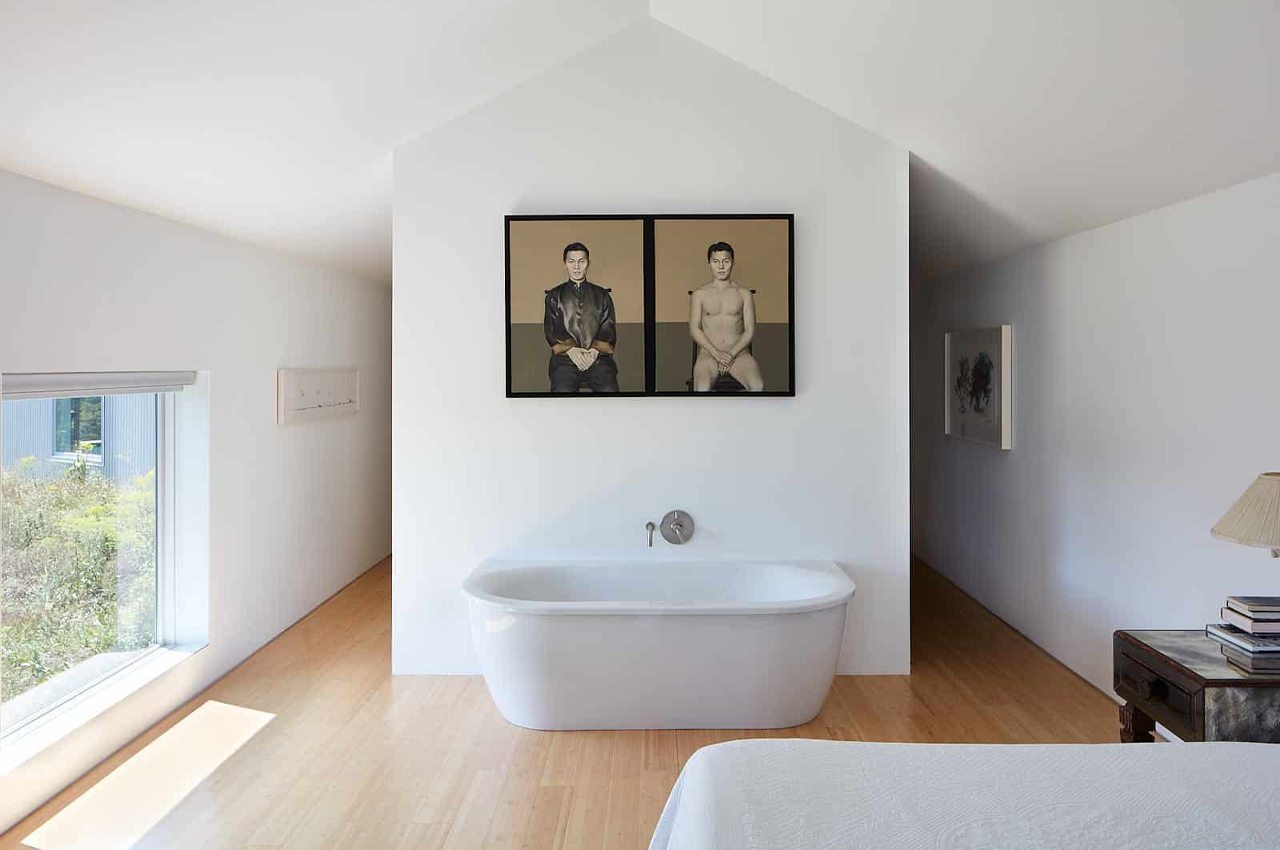
“Its simplicity and clarity of concept make it special. It is about adding an object to the property, on which the clients have installed sculptural artworks,” explains Suchi Reddy
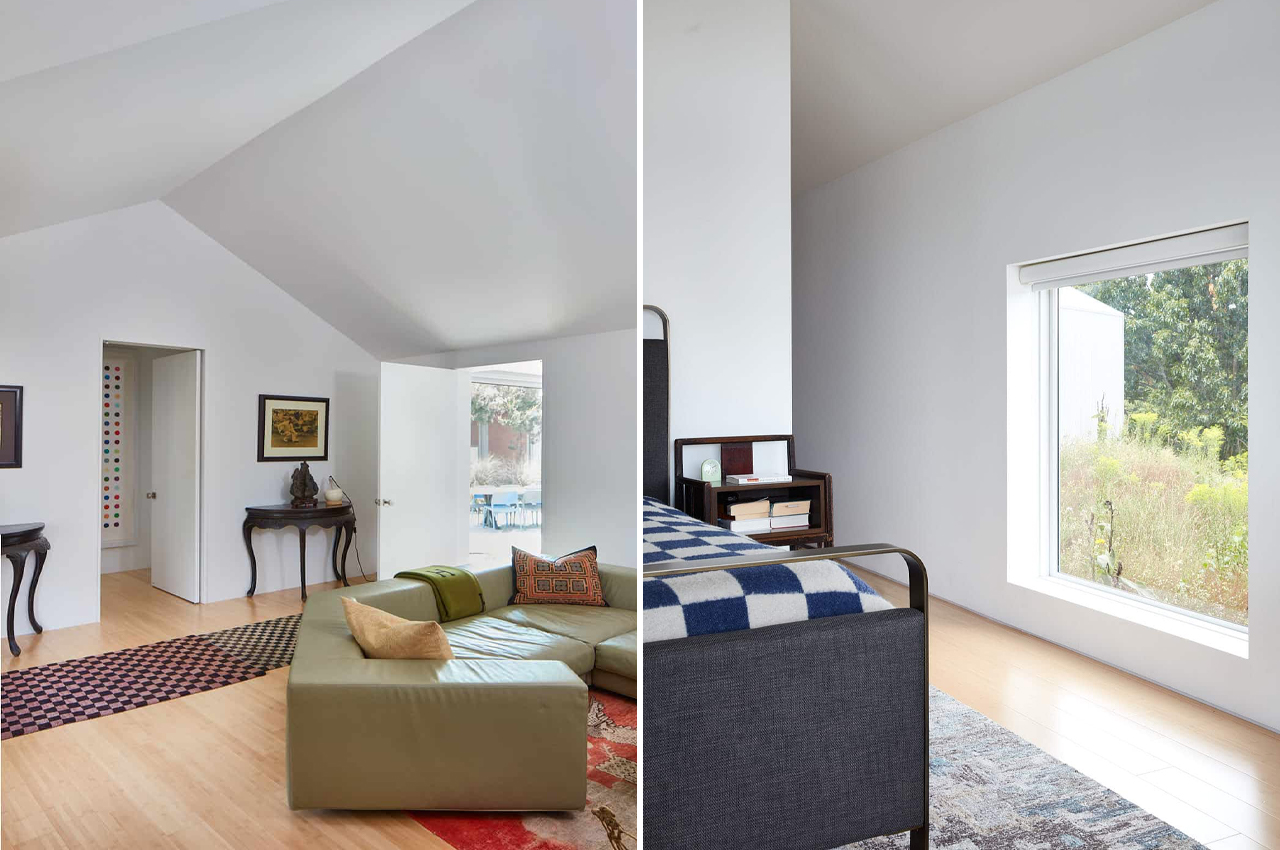
Antique furnishings and modern touches tie up each room with balance in design.
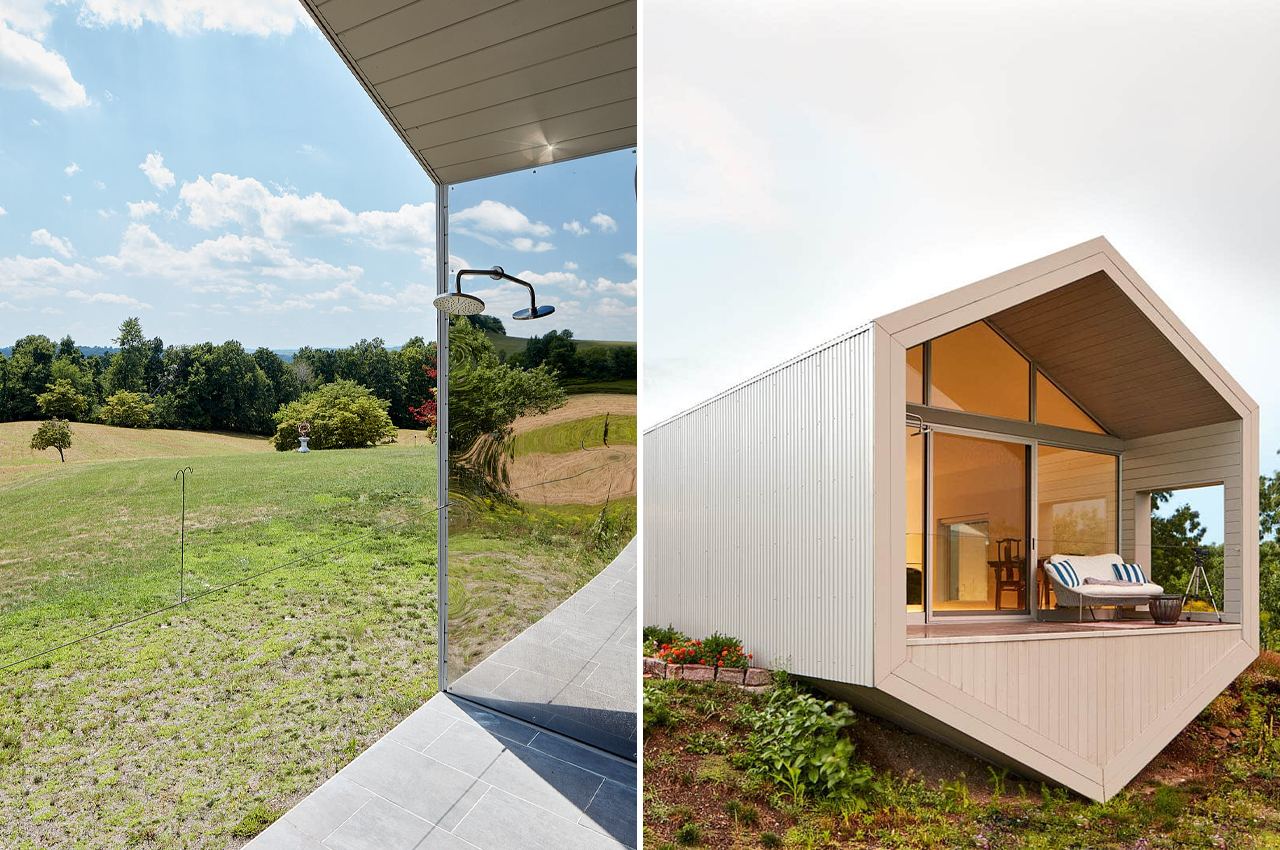

“The extension has its own sculptural quality but simultaneously doesn’t feel like a showpiece. It’s humble,” Reddy continues.
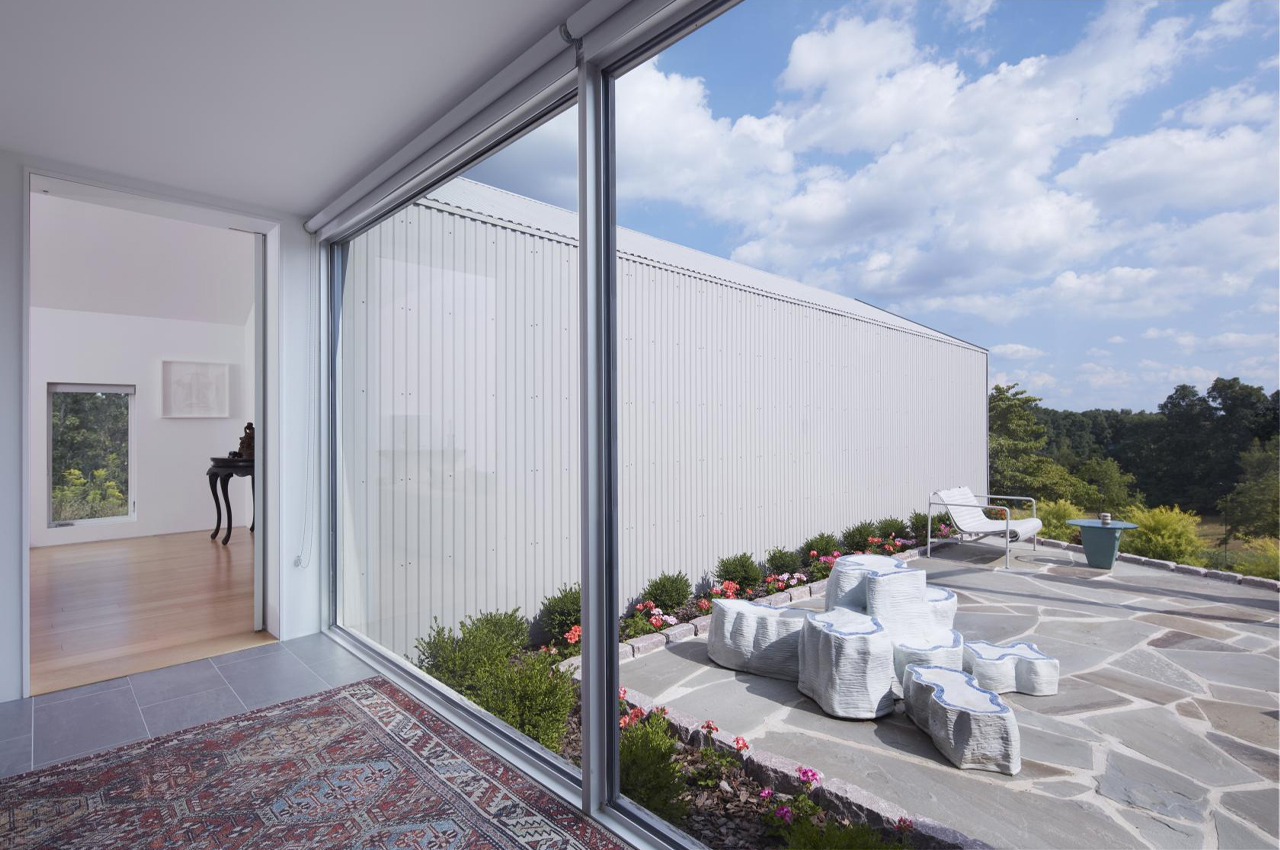
Sculptural art pieces give the home a distinct personality that hovers between midcentury and contemporary design.
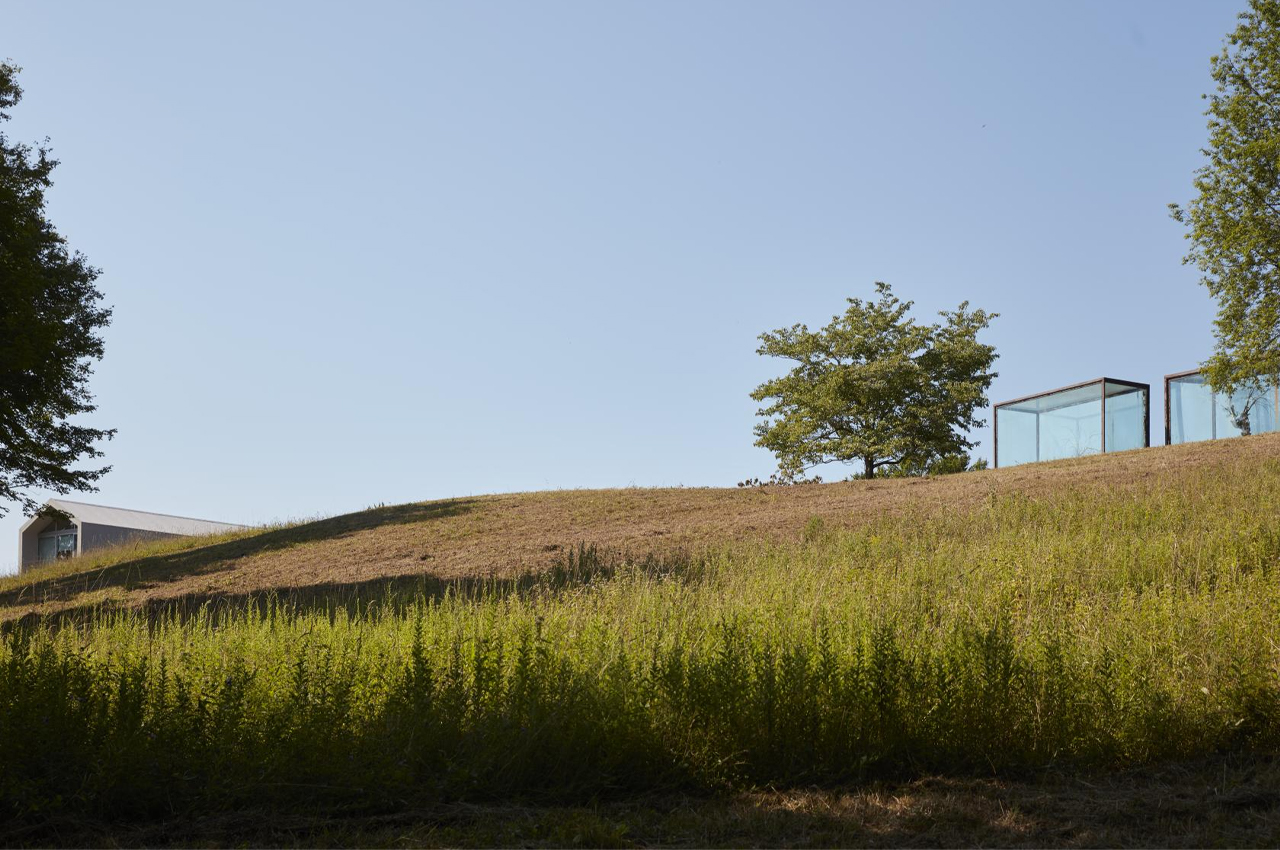
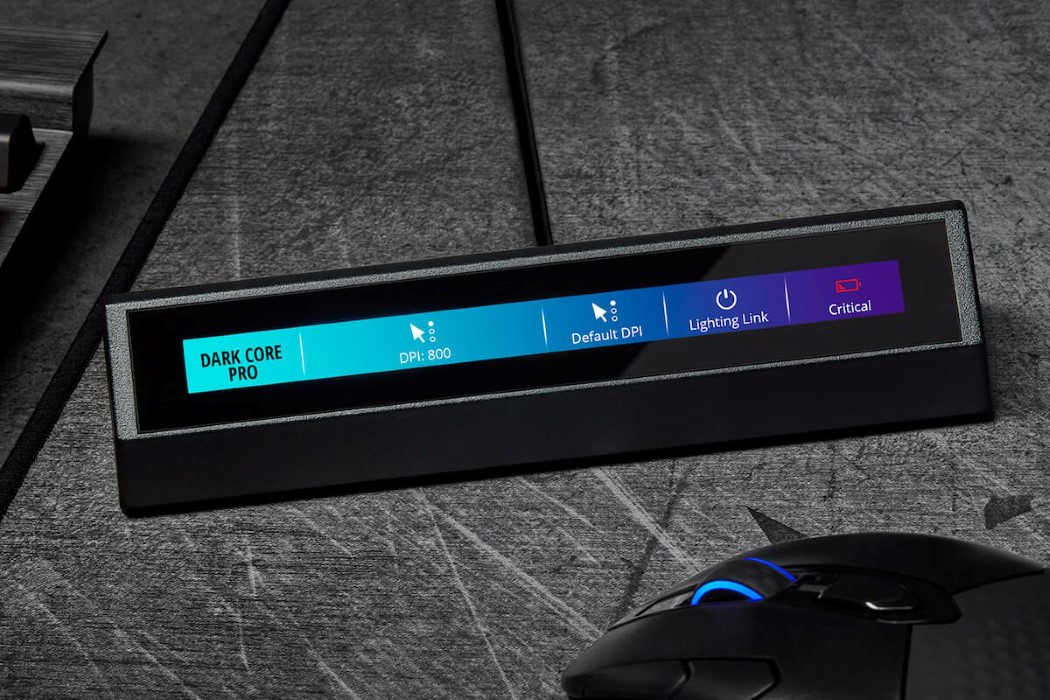
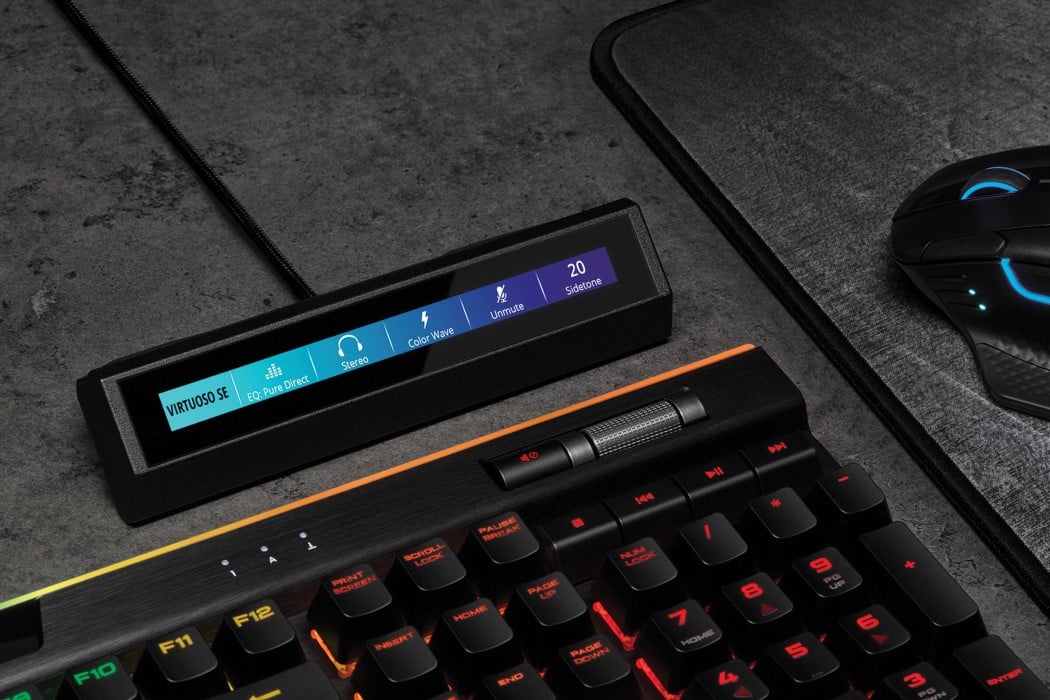
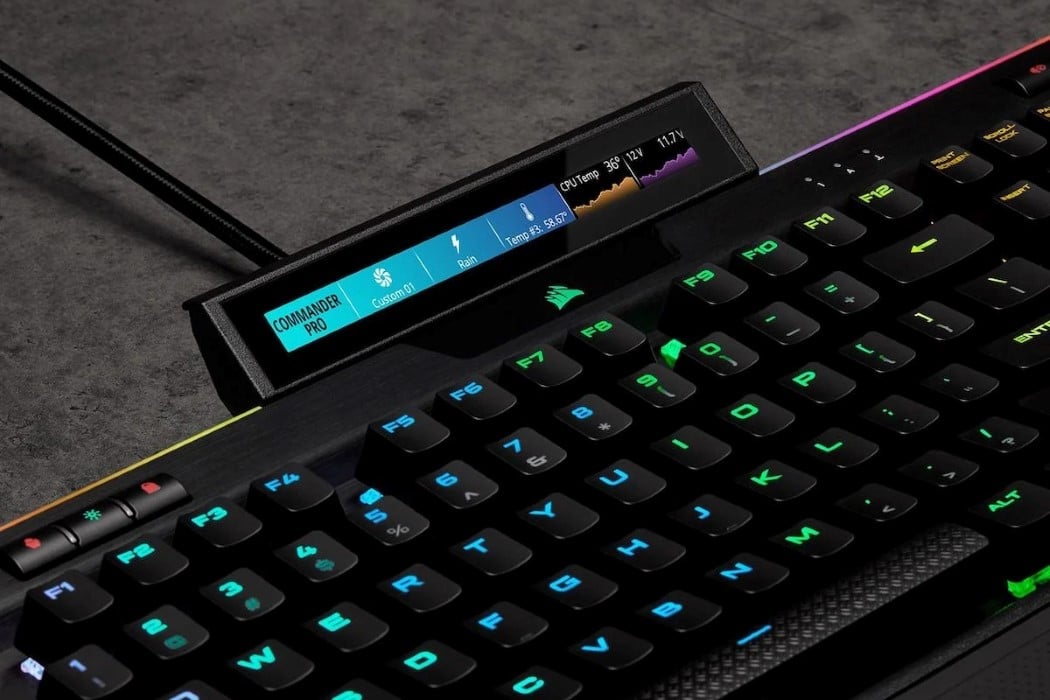
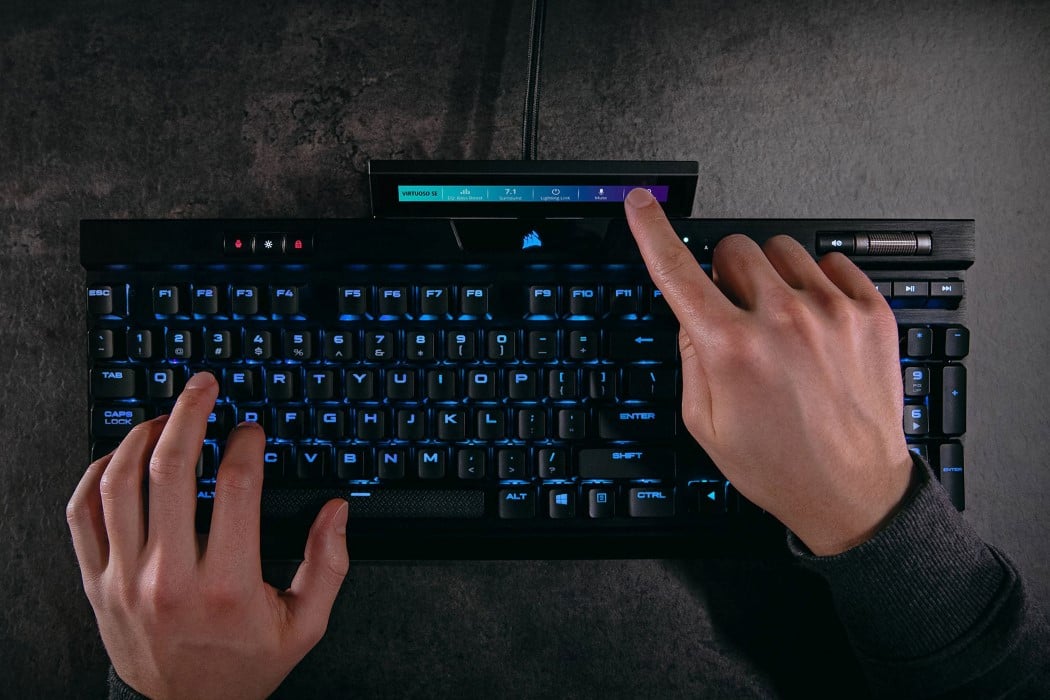
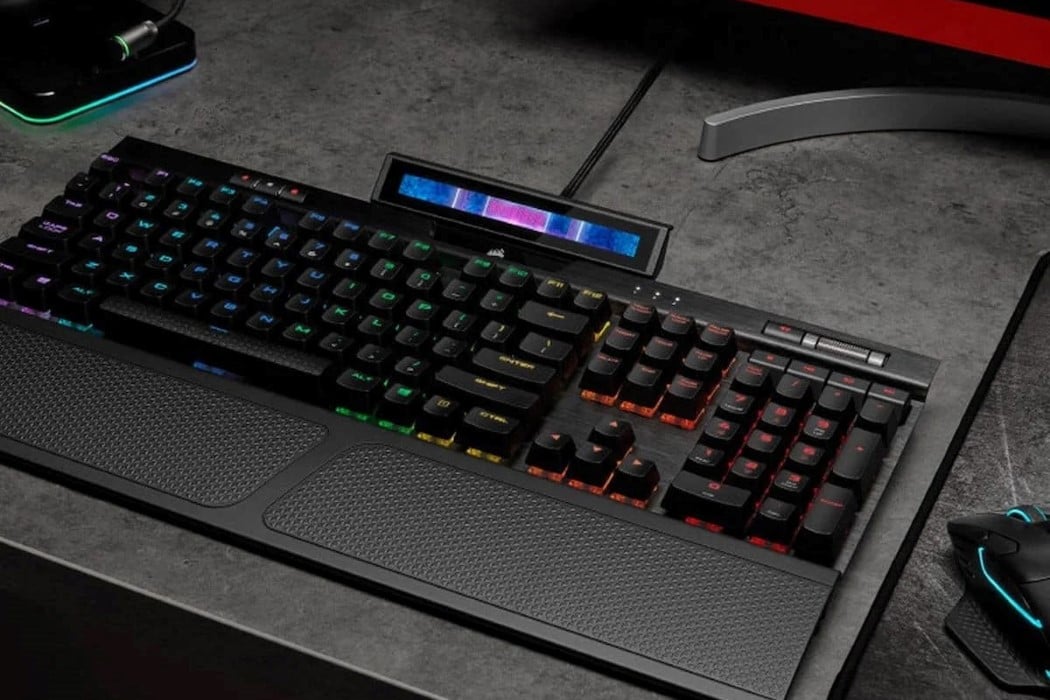
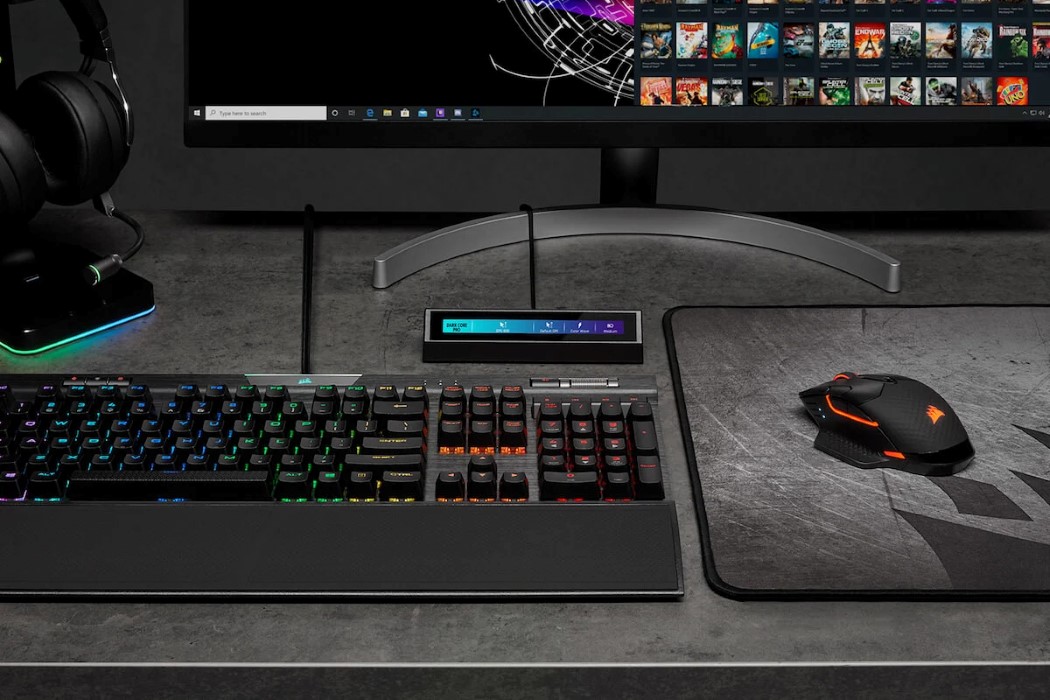

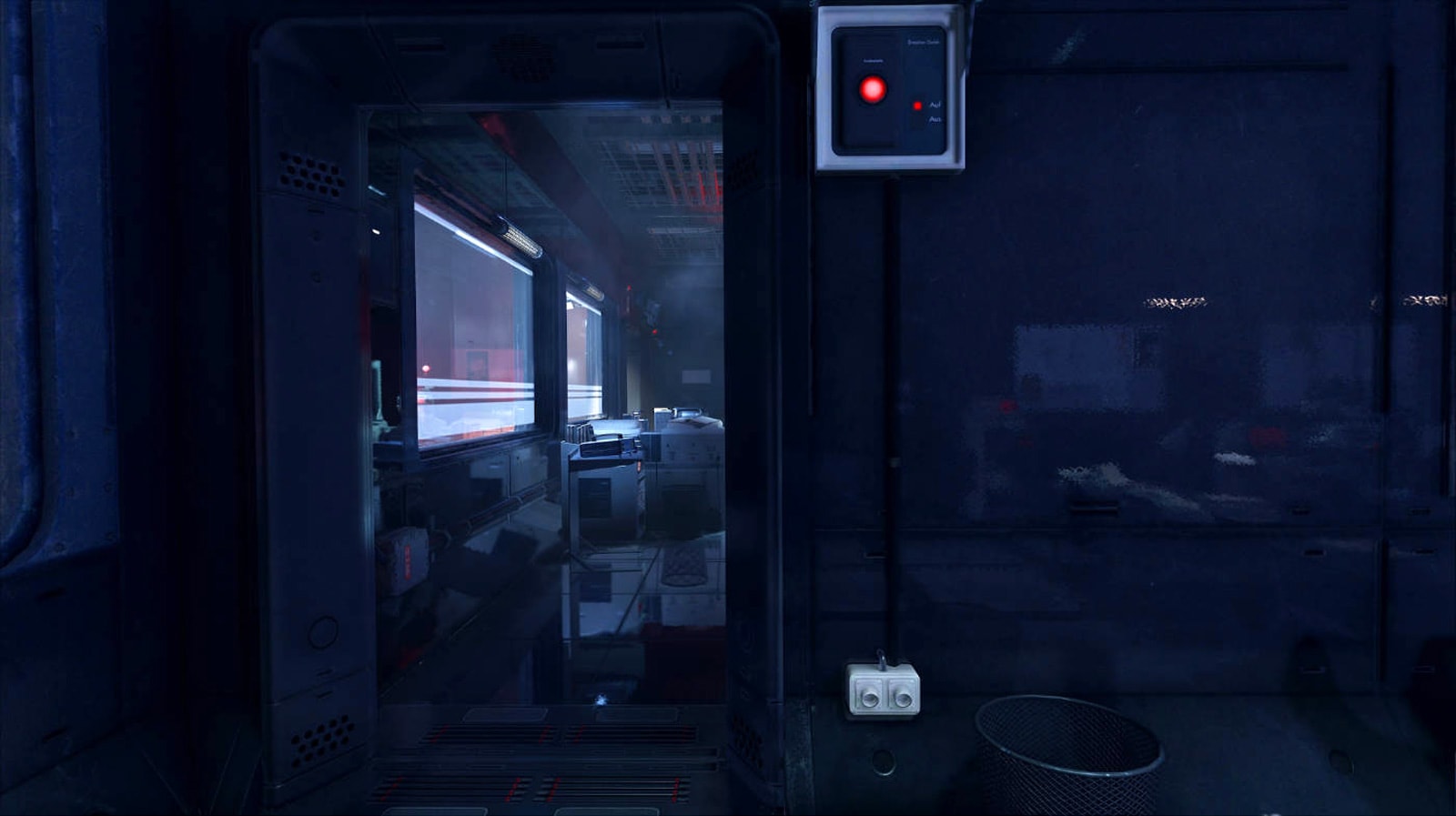 You haven't seen much ray tracing in games due in part to the limited frameworks for it. Outside of Microsoft's DirectX, creators have usually had to lean on proprietary approaches. Soon, though, it might be relatively ubiquitous. The Khronos Group...
You haven't seen much ray tracing in games due in part to the limited frameworks for it. Outside of Microsoft's DirectX, creators have usually had to lean on proprietary approaches. Soon, though, it might be relatively ubiquitous. The Khronos Group...
 Browser security extensions aren't automatically safer -- they might even make things worse. Mozilla has pulled Avast's Online Security and SafePrice extensions for Firefox, plus their AVG-branded equivalents, after AdBlock Plus creator Wladimir Pal...
Browser security extensions aren't automatically safer -- they might even make things worse. Mozilla has pulled Avast's Online Security and SafePrice extensions for Firefox, plus their AVG-branded equivalents, after AdBlock Plus creator Wladimir Pal...